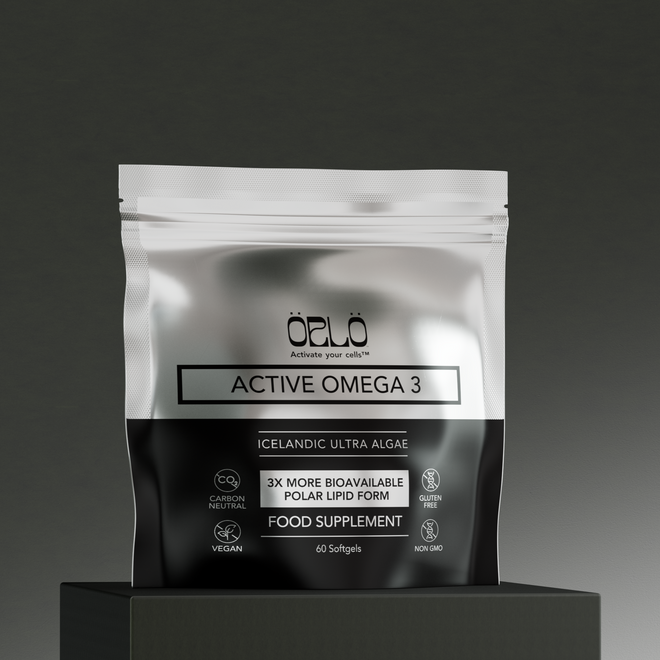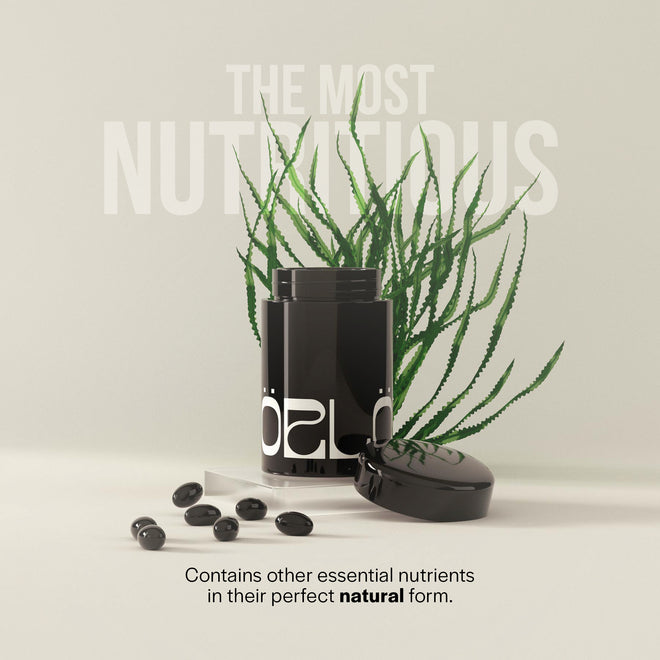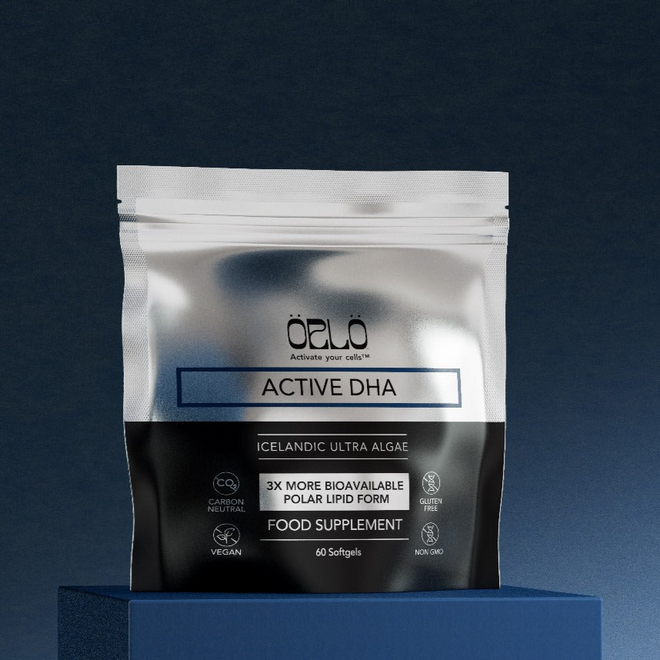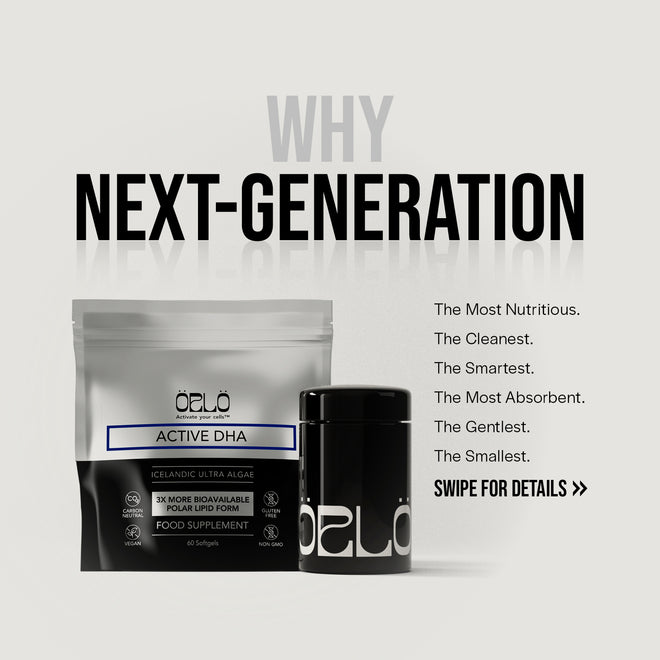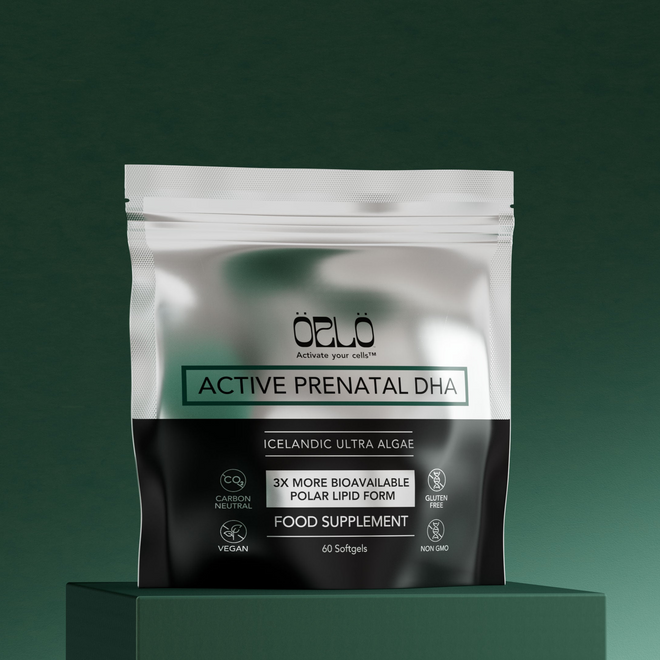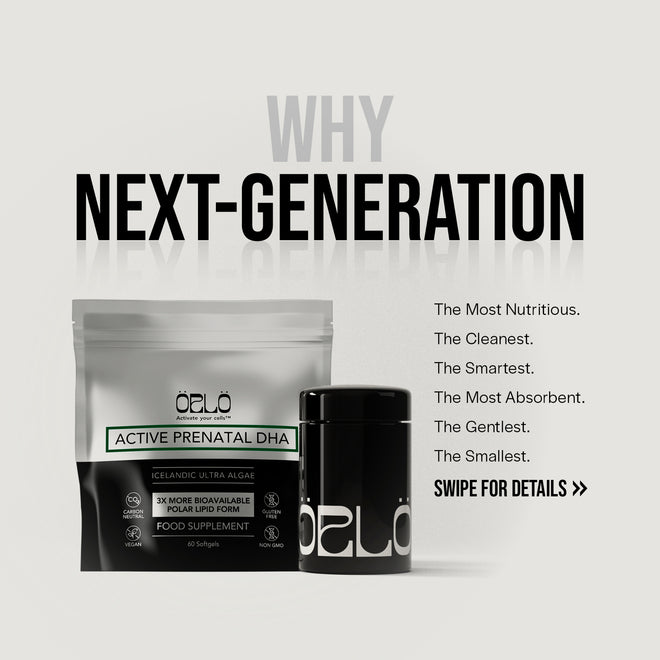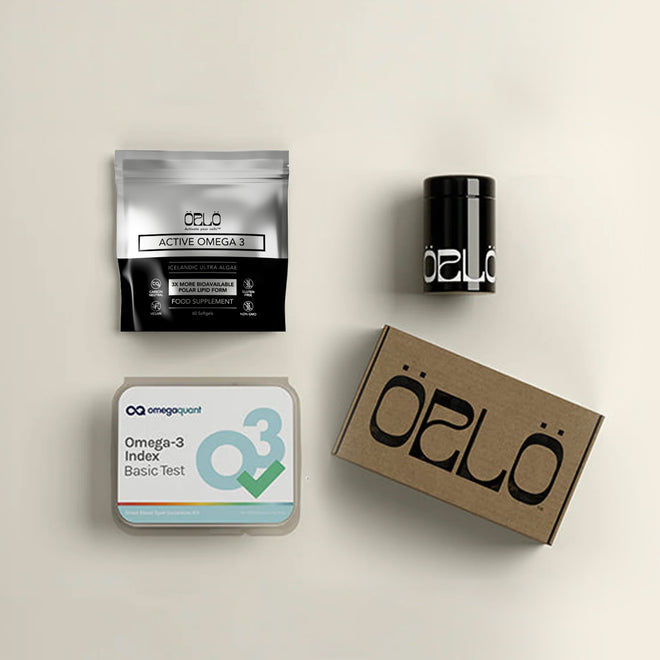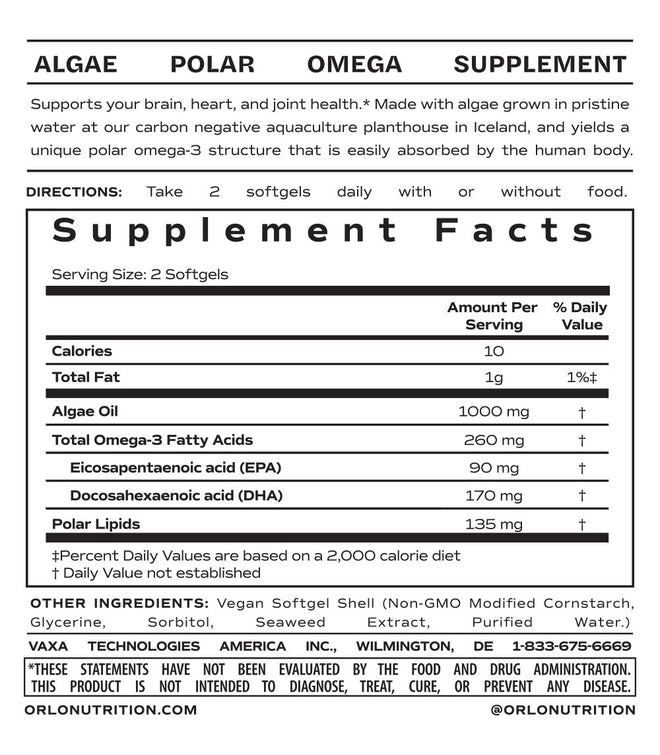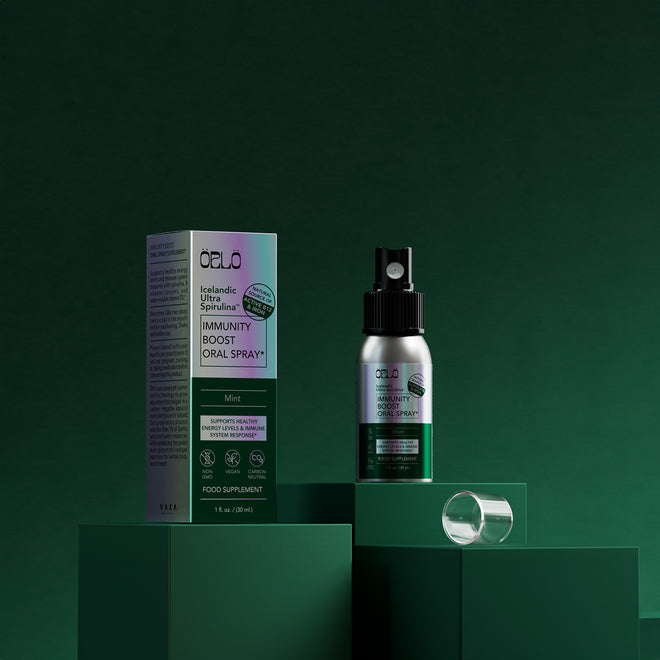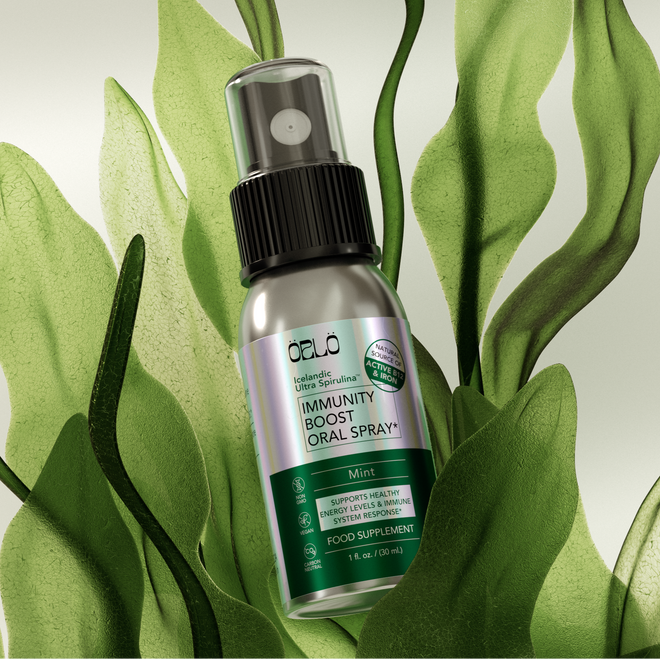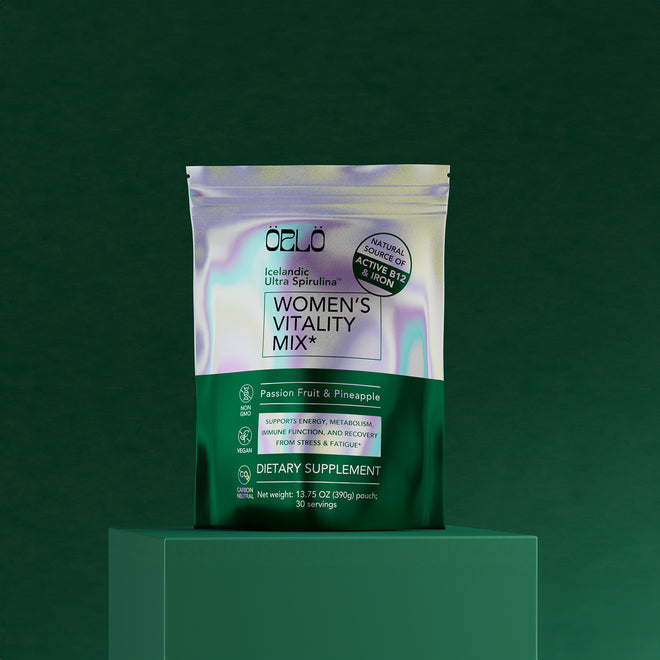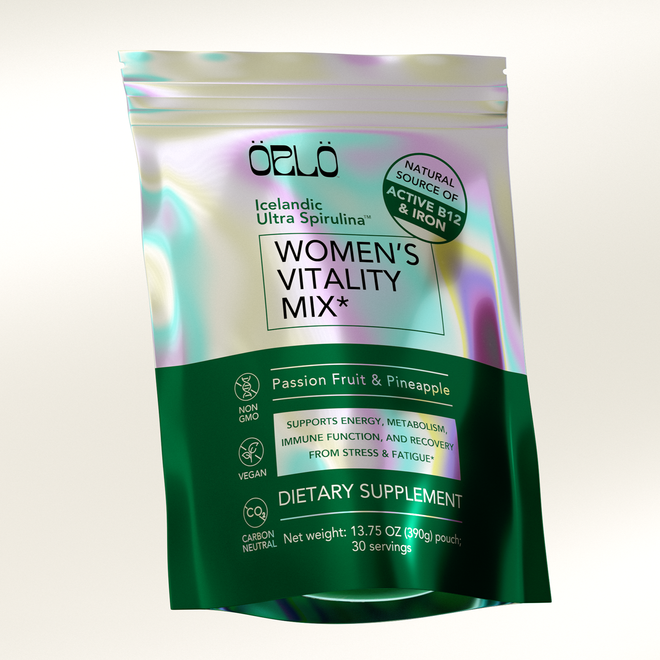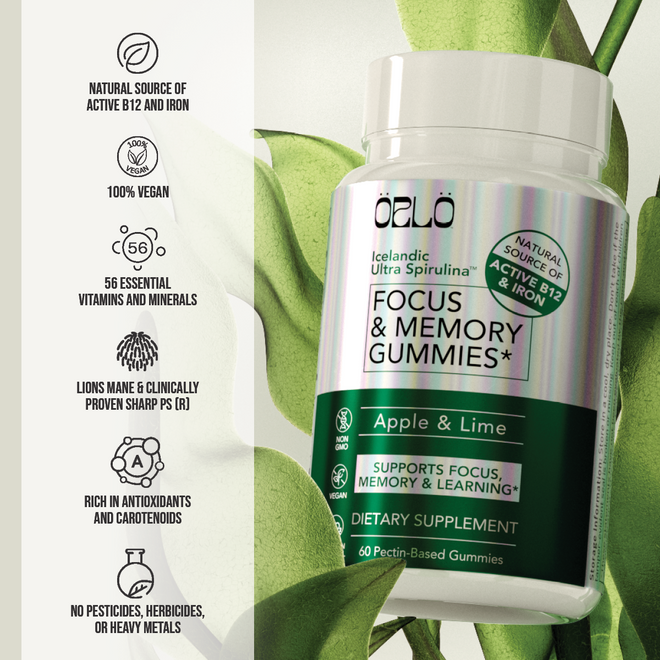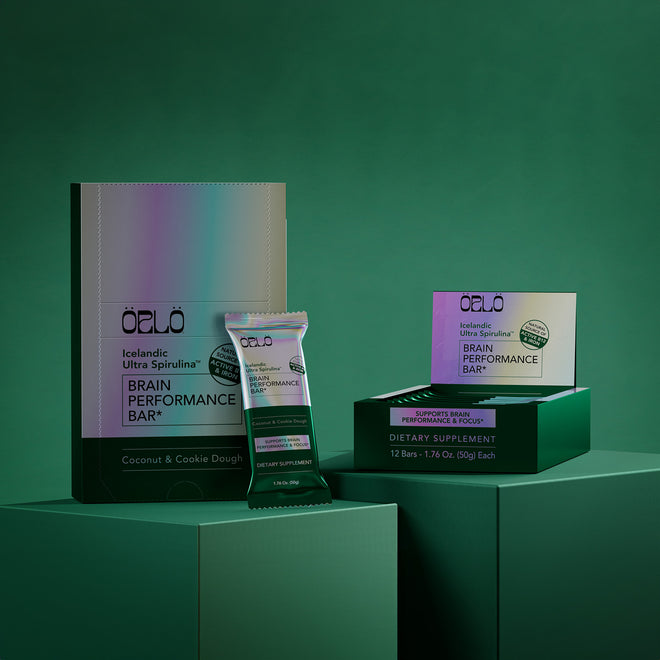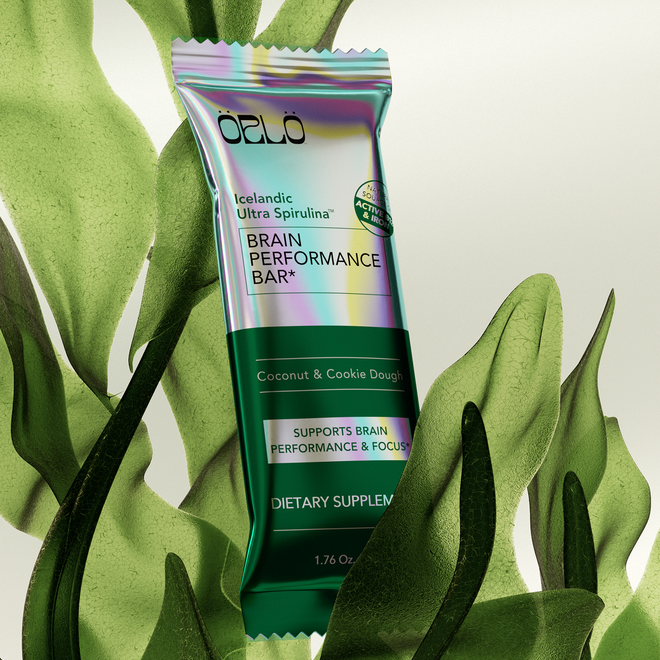25% Off - use code: HOLIDAYS
Weight Loss At Any Age: Live Your Longest And Healthiest Life With Amy K. Wilson, RPh - The Nutrition Coach Pharmacist
Watch the episode here
Our weight loss journey varies across different phases of our lives. We may be losing weight more easily when we’re younger and harder when we’re adults or vice versa. Accordingly, we subject ourselves to various weight loss methods that are, perhaps, unhealthy. It’s time we take our health back into our hands and lose weight, no matter the age, naturally! Corinna Bellizzi is joined by Amy Wilson, PPh, BCGP, ACE, AFAA to talk about weight loss at any age through healthy food and supplements (and without being overly restrictive!). Amy is a Board Certified Geriatric Pharmacist, a certified fitness professional, and a certified nutrition coach. Using the FASTer Way to Fat Loss platform, she is disrupting the diet industry and helping her clients take their health back. She breaks down this program with us to not only shed those inches but also reverse and prevent diseases. Join Amy in this episode and learn actionable tips to lose weight and live your longest and healthiest life!
Key takeaways from this episode:
- FASTer Way to Fat Loss platform
- Why eating less doesn’t work
- What you need to know about medications
- Eat real food and build muscle
- How to reverse some signs of aging
Guest Social Links:
Website: https://amykwilson.com
LinkedIn: https://www.linkedin.com/in/amy-wilson-rph-bcgp/
Instagram: https://www.instagram.com/thenutritioncoachpharmacist/
Facebook: https://www.facebook.com/amywilsonfitness
---
Weight Loss At Any Age: Live Your Longest And Healthiest Life With Amy K. Wilson, RPh - The Nutrition Coach Pharmacist
In our last episode, we got to dive into the world of health and nutrition as it relates to toxic loads and things that we might be exposed to in our daily diets that we should seek to avoid as we got to know Kelly Ryerson, otherwise known as the Glyphosate Girl. Now, we’re going to dive into some more practical solutions for you. The things that you can do to ensure that your metabolic health is at its best to ensure that your health long-term is at its absolute best so that you can live your longest health span. To navigate this conversation, I’m thrilled to be joined by Amy K. Wilson. Let me tell you a little bit about Amy Wilson.
She is a board-certified geriatric pharmacist. This means that she helps people live their longest, healthiest health span. She’s also a certified fitness professional and a certified nutrition coach using the FASTer Way To Fat Loss. We’ll be talking about that to give you some real actionable tips. It’s important that I also remind everyone that we aren’t here to treat diagnose or cure. Amy’s not your service provider, nor am I. We’re doing this for education purposes and to ensure that you have the tools you need to live your longest, happiest, and healthiest life.
Amy has many years of experience, specifically working with individuals to help them reach their best health. She is passionate about helping people prevent and reverse diseases that you might confront that are avoidable and even reversible, like pre-diabetes, Type 2 diabetes, and more. It’s important that as we open this conversation, you keep an open mind and perhaps consider some of what you’ve already heard in media and take those things with a grain of salt as we seek to inform and help you understand a little bit better how you can manage your health and putting the power of managing your health in your hands. I’m thrilled to bring her up to the stage. Amy Wilson, welcome to the show.
Thank you for having me. I’m thrilled to be here.
I know that I am going to learn a thing or two too. I’m someone in my midlife. I’ve now crossed the threshold into my late 40s.
Officially midlife.
Some of the things that we might talk about, like metabolic disorders and how this toxic load can impact our overall health and our microbiome, all of which impact our ability to lead our best life. I wanted to learn from you. First, what motivated you to work with people as they’re going through this particular age as they’re crossing midlife and into later life, battling some of the changes that we notice as we get older? What brought you to that?
I’m midlife too. I’ve been in fitness and I’ve been in pharmacy for years. I started fitness when I was sixteen, back in the days of the ‘80s, leg warmers, big hair, that thing. Things have changed a lot since the ‘80s. We’ve learned things that we thought were right like low-fat, margarine, and fat-free. That stuff doesn’t work anymore. It’s not good for you either. It’s toxic, but we didn’t know any better. In my 20s, 30s, and 40s, I would do different diets and different things in fitness and nutrition.
As a pharmacist, people come to me all the time because we’re the most accessible health profession. “What supplements should you take? How can I lose weight?” As a fitness instructor, same thing. People would come up to me and say, “How can I get healthy? What can I do?” I didn’t have a lot of information. I had what was out there in the media. I had what was out there at the time in my certifications that in my world that I would take. Fast forward to my 40s, perimenopause and menopause. What was affecting me was I was getting fluffy and my waistline and hips were increasing. It was how I was feeling. Headaches, joint pain, and A1C crept up to be pre-diabetic. What? I’m a pharmacist. I’m a nutrition coach. I am a fitness professional. How in the world am I pre-diabetic?
What is A1C?
A1C is a snapshot of what your blood sugar has been in the past 90 days. When you go to the doctor, a couple of things will happen. When you go get your labs, you will get your blood glucose drawn. That is what your blood sugar is at that moment in time. You’ll also get an A1C. It’s glycosylated hemoglobin A1C. When they take that test, it gives a snapshot of what your blood sugar has been doing the past 90 days. They can see trends.
Even if they take this at one time, will it see trends over the past?
Yes.
That’s strange. I wasn’t aware.
Normal is around a 5, 5.2. When you start getting to 5.7, 5.8, 6, you’re pre-diabetic, you get to 8, 9, 10, and you’re full-blown diabetes. It’s a good marker, especially in your midlife if you have an A1C. If you go and get labs done, it’s usually standard. Mine was increasing. Diabetes runs in my family. I thought it was just with the men, obviously not. I was looking at other things. I was not immune to social media or to the articles about losing weight quickly, do this, and do that.
You see these influencers coming on and it makes it look like everyone’s lost 30 pounds just eating gummies, which is not the reality. Those of us who are in the know have it clear in our minds. That isn’t how you lose weight, just sucking down some gummy vitamins. It’s not going to work.
“Drink this and you miraculously come out the other side in a size too.” It doesn’t work. The program that I coach is called FASTer Way to Fat Loss. I used that platform. It was getting back to the science. It was, “How are you fueling your body? What are you putting in it? Are you feeding disease or are you feeding to prevent disease?” It was a total mind shift, not only with wanting to lose the inches, but it was also, “There’s a bigger picture here. It’s not only about losing the inches, it’s about helping my metabolism and my body to prevent disease.”
Same time in the nursing homes, I’m seeing people my age and younger being admitted with lifestyle diseases, meaning pre-diabetes, diabetes, and things that could be prevented. It became my mission, which I call the nutrition coach pharmacist, to educate people about what can we do as midlifers. We want to get in those genes and feel amazing, but it’s also a bigger picture of what we can do to reverse and prevent disease. Everything’s melded. My fitness, my nutrition, and my pharmacy are all into the nutrition coach pharmacist.
Let’s talk about what leads people to this pre-diabetic state. I want to help people understand why eating less doesn’t work and how they can get over that mindset. As somebody who also grew up in the ‘80s and ‘90s. I graduated from high school in ‘94. If you think about that time, it was all about restrictive eating and going to WeightWatchers and not having more than twenty points a day or whatever it was. You fueled a bunch of people leaning towards anorexia, bulimia, or exercise bulimia, which is you eat a lot, exercise, and you double down on that.
Those issues were front and center for our generation, those Gen Xers out there. This may be a little bit less of a problem for Millennials, I don’t know. We’re also still confronting some disordered eating, especially when we start to eat less for a long time. Let’s talk about what leads people to being pre-diabetic or having these issues with metabolism and then dive into why eating less doesn’t work.
Part one is the diabetes part. Deep breath, people, because this one may shock you. You think you’re doing everything right. That’s what’s hard. You think you’re doing everything right. You’re doing what you’re supposed to be doing. You’re eating the low-fat, the healthy choice, or the lean cuisine, and you’re doing what your doctor said. Eat less is usually a lot of times what they say. “You need to eat less and go get a treadmill.”
The issue is that if you are putting in your body ultra-processed foods, that’s not helping you. That’s increasing your chronic inflammation. Diabetes is not just a sugar disorder, it’s an inflammation disorder. It comes from all sorts of angles. Start getting rid of ultra-processed foods because they also have a lot of sugar, and it has a lot of added sugar in it, along with chemicals and artificial flavors. Your body doesn’t know what to do with this so-called food, but it’s not really food. That will tend to increase the inflammation in your body. It will also promote insulin resistance and decrease your insulin sensitivity, which is what happens with Type 2 diabetes.
Diabetes is not just a sugar disorder; it's an inflammation disorder.
It’s not something that happens overnight. That’s what people don’t understand. Don’t go to the doctor’s office and say, “I have Type 2 diabetes. I have high blood pressure.” It’s been the habits that you may not realize were damaging that you thought you were doing everything right or you were doing healthier. You thought, “I’m not that bad. I’m not going to McDonald’s every day.” Your body doesn’t know how to process that food. Your body craves real nutrition. It craves protein, fats, and carbohydrates. It doesn’t crave chemicals.
I don’t want anybody to think, “I could have done this.” What we’re told in the media is so wrong and no wonder people have analysis paralysis. When you go onto Google and you look up everything, you just don’t know where to start and you don’t know what to believe because you’ve been told some of the wrong things probably since your teenage years.
The core that people need to keep in mind is that they do have these three primary macronutrients that they need. They need proteins. They do need carbohydrates, but healthy carbohydrates, and they need fats. We need to automatically put away this idea that fats are bad. It’s more about balance. I’ve worked with a personal trainer and nutrition coach who said we don’t realize the diets that we have. We might think that we’re eating a balanced diet that we’re getting 40% of our nutrients from protein and 30% from carbs and 30% from fat until we track it.
You start to write down or use an app to log what you’ve consumed. You see, “My balance has been more than 70% carbohydrates. No wonder I am overeating because I’m not getting the things that my body needs.” One of the things that I like to counsel people to do in my world is download a fitness tracker. I’m going to be agnostic about brands. There are plenty of free apps out there and log your food. Guess what? You can put in the grams of carbohydrates. Most foods will automatically have an egg that has 6 grams of protein and this many grams of fat. They’ll already have that in there. You log that you ate one egg, and it’ll show you what percent you have of each of these things.
Over the course of a month, you can start to shift what you’re consuming to be more imbalanced, you’ll have more control, and you’ll feel more satiety because you’ll be getting more fiber. You have arugula, some tomatoes, and maybe some shaved radishes, it makes for a colorful plate. It’s visually pleasing. It’s full of flavor. If you eat like that consistently, you’re getting more fiber and more protein consistently, you are going to be in a healthier spot. You aren’t going to be overloaded with all these sugars that lead you towards a pre-diabetic state.
People don’t realize until you start tracking it. A lot of people think that’s restrictive. I would challenge you and understand that when you start tracking, you end up eating more when you eat real food. It’s restrictive when you eat ultra-processed foods because those are very calorie-dense. They’re smaller and they’re not macronutrient dense. A lot of people forget that carbohydrates are fruit and vegetables.
Fruit is not the enemy. I’ll get that all the time. “I’m pre-diabetic, I shouldn’t eat fruit.” Fruit sugar’s not the enemy. It’s the added process sugar that’s in the other stuff that you’re eating. That’s what we want to try to decrease. Once you start tracking and see how much protein, fat, and carbohydrates you should be taking, and you get that balance, it’s magic. The doors open up, you feel better, and you have more energy. You don’t need that 2:00 nap or cup of coffee because now you’re feeding your body what it needs.

We can expand on this too. Many people here have probably listened to Dr. Gabrielle Lyon Show and she’s the protein queen. She’s always talking about how we need to consume more protein. Of late, she’s had several people who’ve talked about the protein quotient, how much you need in a day, and what women in particular should focus on getting at each meal if they can, which is 30 grams of protein. That’s more than we grow up hearing that we needed. Even the protein shakes out there, usually, they’re 15 to 20 grams, 22 until you get in the bodybuilder styles, and they might be 25 or 30.
It’s hard for people, generally, to understand how much that is. A simple slice of a deck of card-sized pieces of meat has about 30 grams of protein in it. If you go to a vegetarian source, vegetarian sources are not as nutrient-dense. They might have a lot of micronutrients. They also have fiber so they’re going to make you feel fuller. You might have to eat more of them. I follow a particular vegan influencer, and she does these things like what I eat in a day.
It’s astounding how much volume of food she eats. If you do a caloric analysis, you find, first of all, that she is about 30 or 40. She’s getting a lot of protein. She’s getting quite a bit of fat and a lot of healthy carbs every day. She is probably consuming about 1,500 calories, which isn’t a huge amount. Some people need more and some need less. When I did my nutrient profile, I was clocking in at about 1,200, but when I sit there and analyze, I’m good about getting my balance straight, getting 40% of my calories from protein 30 from fat, and 30 from carbs, I find that I have a hard time eating all of it.
I get to the point where I need to eat another meal late in the evening because I didn’t hit my macros. I know that language will sink in for some people. If you target hitting your macros, you’ll find that things come into line. When I am religious about that, I drop pounds. I’ve been a little less lately so I need to get back on that horse.
The biggest complaint of my clients when they first start working with me is the amount of food. We were so used to being restricted, on a diet, and being told we couldn’t eat this. All of a sudden, you’re being told, “I have to eat all of this. You expect me to eat all this protein,” and the myths out there that are going to damage my kidneys and it’s not good for me. We are to dispel a lot of those belief systems, those myths, and understand that.
Especially in midlife, we need protein because we don’t metabolize it as well. We don’t break it down as well as we age. We do need that 25 to 30 grams each meal. As you said, it’s just like a deck of cards of a turkey or a chicken breast. When you start putting that in every meal, what people will do is like, “I didn’t hit protein day.” They’ll make one big meal out of protein. When you break it up a little bit, it makes it so much more doable.
What I like to do is I will not spend as much time in the morning and for lunch making my meal. I’ll focus on having more of the traditional meal a little later in the day with my family because it’s quality time with my family. During the morning and afternoon, I’m making myself a protein shake. I’m making a quick little tofu salad or something like that because I’ve been more oriented towards plant-based. I am following this mantra that Jonathan Safran Foer puts out there of no animal products before dinner.
People go any number of ways. I’m not advocating for only one diet. I’m just saying there are different ways to approach this and you can still get there. There are some core elements that people need to be clear about as they support this journey. Often if they are confronting a metabolic issue, they’re seeing a doctor and the doctor is giving them a drug. That drug might be something that supports their blood sugar, like metformin. It could be some of these newer what I would call designer weight loss drugs that are all over the place in Hollywood now. People are going to the doctor and asking for it. I’d love for you to talk about this issue and get a perspective from a pharmacist on what you’d like to see happen and what you think can work for individuals long term.
Let me first put our disclaimer out there that I’m a pharmacist who doesn’t like medication. Meaning that we would need to try something first. I would rather see you not on medication. That being said, there are reasons for medications. There are reasons that some people need to be on medications. When it comes to most medications, it’s a treatment. It’s just not a cure. It’s a Band-Aid. Whether you have high blood pressure or Type 2 diabetes, it’s not curing the disease. It’s just helping treat it for that time.
Most medications are just treatments. They’re not a cure, but a band-aid.
My problem with the GLP-1s, which are Wegovy, Ozempic, Mounjaro, and some more to come out soon is that it’s being used as a designer boutique drug. There are people who need to be on it. They might be Type 2 diabetes who’s not under control. The thing is that when they’re finding out these drugs cause quite a bit of weight loss. Instead of someone who maybe needs to lose quite a bit of weight, we’re seeing people who need to lose 10, 15, 20, 25, or 30 pounds going for these medications. Always know that medications always have a side effect profile. Saying that, “It’s not going to happen to me,” is unrealistic.
What did you say this class of drugs is called?
GLP-1.
What is GLP-1?
GLP is a glucagon-like peptide. It’s a hormone that’s produced in the gut. What it does is it increases insulin and it also helps to slow down gastric motility. Those are two big things that it does. By slowing down the gastric motility, it makes you feel like you’re full, such as the weight loss. When you take these medications, you will lose weight because you’re not hungry. The problem is if you’re not working with someone like me or somebody who is helping you to make sure that you’re getting the nutrition because our bodies are machines. Our bodies are one big chemical reaction. They need nutrition.
If you’re still eating the diet food or eating ultra-processed foods and fast food, you will lose weight, but you’re not preventing future diseases. You’re not preventing something called frailty. If you think about someone older and maybe they’re shuffling, they have osteoporosis, or they look frail, that’s frailty. What we’re seeing with these designer drugs or with the Ozempic is that it’s not body fat that’s being lost. It’s the muscle mass. That is your metabolism. That is your fountain of youth. That is what’s going to keep you thriving later in life.
When you go off this medication, you no longer have that metabolism. You’ll gain the weight right back because you weren’t feeding your body and you weren’t building muscle at the same time. There is a way to use these medications, but the problem is how they’re being distributed now, whether it’s online or you’re going to this boutique and getting it that they’re doing a very big disservice. What I’m afraid of is that, in five years, we are going to start seeing the bone fractures. We’re going to see an increase in osteoporosis and frailty in somebody that you would think should be 80 but they’re actually in their 50s. That’s scary.
When we talked about this, you said that these GLP-1 class drugs slow down the way your gut functions. I find that rather alarming. What does that mean for your microbiome?
If you’re not eating right, your microbiome’s not there in the first place. You’re not having the good bacteria. The other thing is that it’s toxins sitting there. That’s not healthy. We know that could increase colon cancer. The other problem with that is, in some people, it’s a total shutdown causing gastroparesis. When that happens, you’re always going to feel full, you’re never going to be able to eat right and, unfortunately, it’s not reversible.

When we think about things like this, if you have a pet in your life, you see your pets go through this period. My dog is old and she’s starting to slow down. There are some days when it seems like she doesn’t want to eat dinner anymore. When that happens, I’m like, “What’s going on? What do I need to address with her?” They don’t complain loudly. They will gradually stop eating as much and then their health can start to decline very rapidly because you can see in this rapid order what will happen if you stop eating.
We know, too, especially from our interview with Dr. William Li, who wrote Eat to Beat Disease and Eat to Beat Your Diet, that metabolically, we don’t shift much until our 60s. Even then it’s just a little bit, as long as you’re talking about the same level of body fat, but body fat and an abundance of it does slow down your metabolism. At the same time, it’s important that we build muscle, which is our metabolic machine, and that we reduce fat. How do we do that without turning to a drug that can slow down our metabolism and stop digestion? Stopping digestion is a very bad thing.
I’m a human, too, because I see this and I’m like, “How cool is it?” yet you’re not seeing what’s going on the inside. You’re only seeing the outside. It may look great, but in twenty years, that older self will be going to look back and go, “Girlfriend, you really shouldn’t have done that because you’re not where you want to be.” The problem that we have with perimenopause and menopause is that we did it to ourselves a little bit with the increase in fat because we’ve yo-yo dieted for years.
The same thing that’s going on now when we yo-yo diet and we’re restricted. We weren’t using fat for fuel. People were telling us all the time, “You’re burning fat. That hunger, that’s great. You’re sweating, that’s fat crying.” It’s not. If you’re not eating and you’re working out, you’re using muscle. Hands down. Studies have come out that say our metabolism doesn’t shift much until we’re 65. All of us are going, “Wait, what?”
Only by a little bit, it’s not a huge amount.
Everybody’s mind was blown by this study and all the women were going, “How is that possible? Forty-five hits and I gain weight.” It’s because of what we did in the past. It’s because we use that muscle and our metabolism. Our bodies are meant not to shut down. We do it to ourselves. What can we do? It comes down to two things. Eat right, eat real food, and build muscle. You have to eat to retain muscle and you have to eat to build muscle. When you don’t eat, your body needs energy. It will not get it from fat because that is a long process to break down fat for energy. It’s very quick to get it from muscle. It’s science.
Our bodies are not meant to shut down. We do it to ourselves.
When your body has all the right things, you’re fueling your body, you are giving it what it needs, and it can build muscle, it’s like, “She’s doing some good stuff here. We have all the time in the world. Now we can use fat for fuel. We don’t have to break down the muscle tissue.” As we age, muscle is our bank account. We need to keep building that muscle. We need to keep putting stuff in that bank because that’s what’s going to keep us thriving, healthy, and from breaking hips. It’s going to keep us independent. It comes down to building muscle and eating.
We pick up heavy things and put them down. This is why I am my healthiest when I’m doing weight training and I know that. It was easy to fall out of those habits with COVID because everyone got scared of going to the gym. Even my gym shut down for a while, I had to buy some weights. Also, making time for them with two little kids. A busy work schedule becomes challenging too. Setting that time aside, I know I feel my best when I’m lifting weights at least four times a week. That might sound like a lot, but going there and having those moments of being able to pick some stuff up and put it down, using some of the free weights, and watching my muscles feel how they feel when I’ve exerted them, and having that relief of having expended this excess energy in a way that you pent up.
I sleep more soundly when I lift weights. I don’t find that I am as hungry for the things that are unhealthy for me when I lift weights. I’d like to help us destigmatize some of this around muscle building. It’s hard to build muscle. It takes a lot of effort to build muscle. It takes time to build muscle, but it’s also not rocket science. We need to give our bodies enough protein, lift some weights, and do some strength training. Maybe you’re also doing lunges. You can do lunges anywhere. That operates as a bodyweight type of weightlifting. There’s plenty you can do even within your own home. Do you have specific resources that you like to point people to so that they can start to increase their muscle mass, which is a metabolic lifter while also operating in its way, like muscles?
Let’s go back to pre-diabetes and Type 2 diabetes. The more muscle you have, the more insulin receptors you have. The more muscle you have, the more that pulls sugar out of your blood so your blood glucose goes down. There are so many reasons to have muscle. There are so many reasons that we know that also prevent disease. You can start anywhere, whether you’re a beginner or you’re getting back into it. It doesn’t have to be hard. You don’t have to do it at a gym. You can do this at home. You can do body weight. You can use bands. With my program, it’s virtual. It’s one of those things that you have access to and the ability to do at home.
Find something that works for you. Have a community, a coach, a spouse, or someone who also is going to help you stand and get into that. Maybe it’s your exercise room or the gym, but it’s going to keep you in that habit. Starting the habit is always the hardest part. Once you get into it, it’s so much better and once you start getting the results and you start feeling better, it becomes that you just want to increase on how you’re doing things. You want to be there, you want to feel good. As you said, it does go over into how you eat because now you understand. “If I want to be able to lift weights and I want to be able to get muscle, then I need to eat better.” It becomes this amazing positive snowball effect that your cognition is better. We’re preventing possible Alzheimer’s and dementia.
It has also been referred to as Type 3 diabetes, having too much sugar over a lifetime while remaining too sedentary and making your insulin disrupted. Now you essentially have created a cascade of problems that ultimately end in late-life neurodegenerative diseases. We’re finding that these things are tied to inflammation. They’re tied to the overconsumption of carbohydrates and underconsumption of other macronutrients and fiber for one of them.
It’s important to note also that fiber slows down your digestion, too, but in a natural way. You get a bulk of fiber in your gut, and you’re going to get more nutrients out of your food because it takes a little bit more time. Also, it goes through your digestive tract. What does it do? It makes you feel fuller so you feel satisfied.
I like to say fiber is like the dishwasher for your intestines. Think about it. You want that fiber. Where Wegovy and Ozempic stop everything, fiber’s only slowing it down. As it’s slowing it down, it covers your stomach and the intestines. Things slowly get absorbed. It’s not shutting down your system. As it’s going through the system, it’s scrubbing. That’s what’s going to prevent the colon cancer. That’s why we know that people with lower fiber and we’re seeing younger and younger people with colon cancer because we know it’s ultra-processed food and it’s less fiber. The question I’ll get is, “What about Metamucil and Benefiber?”

Psyllium husk, just throw it in the blender.
The more natural the source, the whole food source, the better. The less that you can do a supplement like that is highly processed. Most of them have sugar, apple cider, and gummy vinegar that’s another one. They’re a completely different story.
The really interesting thing here, too, is to help people understand that when they’re eating whole foods, they’re also ingesting prebiotic fibers, which feed your microbiome. If we focus on eating fiber-rich foods, whether they be fruits and vegetables down the line, we’re going to get these things that keep our guts healthy and help us digest the other foods that we’re consuming so that we can be our healthiest. You have 37 trillion of your cells and 39 trillion microbiota. It’s crazy.
I feel like we’ve covered a lot of ground so far. I would like to talk about two things. One is how we can reverse some of the signs of aging because vanity appeals to a lot of us. If it looks good on the outside, I’m maybe more likely to stick to that because I’m seeing a difference in the mirror. The other is, what are your favorite supplements? What things do you think that we need to do to help set us up for success? It’s tough to get enough of it from your diet. Let’s talk about reversing aging to make it pretty. What are your favorite supplements to support those nutrition gaps that are tough to fill?
Let’s talk about reverse aging. I’m going to go on the sugar kick. When we consume way too much sugar, we spike our blood sugar. When we start spiking our blood sugar, that does a lot of damage to our mitochondria, our DNA telomeres, those are the endpoints of your DNA if you think about shoelace caps. As we age, those caps get smaller.
What we know is that as we use real food, we can grow those telomeres so they get longer instead of shorter. When you have a lot of sugar, it gets shorter. Shorter DNA and less mitochondria speed up the aging process. If we can do real food and the protein, the micronutrients, the carbohydrates, the fiber, everything that we’ve been talking about, you are going to find that only does your skin look better, that you have fewer wrinkles, you’re going to feel that your body feels younger. It’s going to do all the things that you want to do.
As for the second question about supplements, some supplements are hard to get. I am not a big fan of a multivitamin. The reason is that most multivitamins are pressed. There are so many studies out there that show that it does not get absorbed. It goes straight through you. There was a study years ago on nursing home residents and, pretty much, the vitamin was unchanged, nothing was absorbed. It doesn’t work. I’m a big fan of getting it from your whole food nutrition if you can. There are some things that you can’t, and there are some things that maybe you need a little bit of help with. I do take a probiotic. I got that from a company called Natren, which is microencapsulated.
I love that product. Let’s talk about this for a moment. I’m not one to endorse many products. The Healthy Trinity by Natren is a combination of three different probiotics. That’s why it’s called the Healthy Trinity. It’s sold in the refrigerators section. It’s in a capsule, not a tablet. If I ever get to a point where I feel like I’m recovering from some stomach bug or something and I’m not feeling very good, there are two products I tend to go to. One is Bio-K, which is live concentrated like yogurt-style bifidobacterium and the Healthy Trinity.
I will notice that everything just returns to normal. Your stool is just the way it’s supposed to be and it’s not painful. You’re not having an issue. You go every day, maybe once or twice a day, just fine. I feel like that’s a really good indication that it’s working and it’s worked for me several times. You don’t necessarily need to take that product every single day. I’ve used it more allopathically. I find that it works. I love that.
I have a lot of clients who have gut issues. We put them on that. It’s amazing how their gut issues go away. The other one is from you guys, the Orlo. My problem with omega-3s in the past has been fish burps are the most disgusting thing in the world. The sourcing of the omega-3 is questionable now. You don’t know what you’re putting in your body. You don’t know where it’s coming from. I am excited about the Orlo product, with the omega-3 that is carbon negative and that it comes from algae, which blows my mind. It’s such a cool process.
You couldn’t get EPA from algae at all. Now that we’ve got that, there’s no reason to go to the fish oil anymore.
Also, no fish burps. That’s the best part because most people will say they cannot stand taking Omega because of the indigestion. I have had not even a burp. It’s a phenomenal product to get those omega-3s.
My son now comes and asks for these because he says that he feels like he’s more focused. My son is a textbook case of ADHD and I don’t see a dramatic change in that. I’m just going to say that. He says he notices a difference. What helps him? Tea. We give him black tea or green tea. He responds well to a little bit of caffeine. We know that his teachers say that when he gets that, he’s better. The DHA is helping him too.
He’s getting EPA and DHA from algae. Half the fat in your brain and eyes is made up of this stuff. You need to supplement with it if you’re not consuming fish four times a week. I don’t know about anybody who’s consuming fish four times a week. That’s one of the reasons I’m so passionate about daily supplementation of omega-3s. The other piece is that because this is so pure, the fact that we’re able to minimally process it and preserve the polar lipid form means that even those who have APOE4, which is a genome type that a quarter of the population has, we’re talking at least one representation. That’s 25% of people.
Those individuals are more likely to experience Type 3 diabetes, Alzheimer’s, and other degenerative diseases of the brain. If you’re more likely to have that issue, you need to increase your chances of absorption at every front. Fish burps, we’ve heard people like Dr. Tassone who’s been on the show. He said, “My people who still want to take fish oil, I’ll tell them to stick it in the freezer. Usually, they don’t complain as much about the fish oil.”
It doesn’t work. I’ve tried that before.
You’re putting a Band-Aid on a problem in that case. As somebody who’s been in the omega-3 industry for decades, I have to say that, usually, if you’re experiencing that, it means that the fish oil has gone rancid. If you’re putting a rancid oil in your body, the negative health implications of that can also be quite vast. You erase the anti-inflammatory properties that omega three might have stimulated before because of the fact that it is now oxidized.
I want to give people a tip here because I always encourage people to cook healthy food at home as much as they can so they know what they’re putting in their bodies. There are less processed foods. There’s a simple test to check if something is rancid that you can perform organ elliptically in your own home. Let’s say you have that cooking oil in the cabinet. Like me, I don’t use very much of it so it is there for a while. Sometimes I don’t know if it’s gone bad or not.
Now I’m pretty good at smell testing, but a lot of people aren’t that good at detecting when it goes off. Take that oil and rub it between your fingers, then separate your fingers, touch them together, and then pull them apart. If it feels sticky, almost like you had low-grade glue, it’s rancid. Don’t consume it. Throw it away. That’s something that you can do with your olive oil, corn oil, safflower oil, or even your flax oil. It doesn’t matter what type of oil, if it gets to that stickiness, that means it’s gone rancid.
That is an awesome tip. I’ve had some other tips, but I like that one better.
It takes the guesswork out of it. What were the other tips you’ve heard?
The smell is definite. If you get that almost after smell, it’s like you smell it but there’s just something off about it, that was always the big one. The color changes too. A lot of people don’t use it enough, or the bottle’s a different color that they can’t tell it had a slight oxidation change.
You probably already know this even without being told because if you go to a bottle that you’ve used a bunch of times, open, closed, and poured, the edge of the bottle will be sticky. Also, if you’ve cooked with oil a lot, you’ll notice that your cabinets themselves have a tacky feel to them. The oxidized lipids that end up in the air will then adhere to your countertops, your cupboards, and things like that and need to be cleaned off.
We want to eliminate that as much as possible. That means when you’re cooking with oil, add an appropriate heat that can handle that. We can also just guide people towards poaching more and using steaming to cook their foods as opposed to using these other methods that require oils because you add a lot of calories with the oils and you also add the potential of oxidizing the lipid and then consuming something that is oxidized, which can create inflammation in the body.
It ends up being a carcinogen. We don’t want to promote cancer.
We need to think a little bit about the practical things that we do in our lives. I want to point people to an earlier episode where I interviewed Dr. Joel Fuhrman on this show because he talks about things like salad dressings too. He has a few recipes that he likes to offer people. He even says, “Don’t bother with the seed oils at all. Don’t bother with oils at all. Make your dressings from raw nuts and seeds and fruit juices, like orange or lemon juice.” You use that acid, or if you want to use apple cider vinegar or some other vinegar, you could do that. Use these glorious nuts and seeds that you can blend up and make this amazing dressing. That’s a great idea because you’re getting the whole nutrition of that seed too, which can then give you more fiber.
Everything we’re talking about.
Get back to the basics. You get the real whole fat that’s not all oxidized. You get the real fiber that’s not this gross, it’s not some isolate or something. You also get the proteins that are in those things as well. You’re getting a whole nutrition source, which I love. I used one of his recipes. He has a recipe for a pistachio sunflower and orange. It’s so good. You can augment it with the spices that you like and stuff like that. I felt like I was eating almost a dessert because it was so rich and such a taste explosion in my mouth. That’s the thing that I want to encourage people to think about. If you do this right, eating becomes this pure joy. It’s not just eating a snack bar on the go.
It’s satisfying. Sometimes when you have a candy bar, you’re like, “Now what else?” When you eat real food and your taste buds do change, the fruit becomes candy, the taste is amazing. When you go back to the alter processed foods, now they taste like chemicals. You’ll understand why it’s so important to fuel your body with real foods so that those chemical reactions in your body can occur. Your taste buds are going to explode and they’re going to thank you for it. It’s one of those things that you’re just like, “I’m not going to go back this way because I like the way I feel. I like the way food tastes. I know it’s good for me.” I always say we have the power to change. We have the power to prevent disease. We have to embrace it and go for it.

This has been such a fantastic conversation. I appreciate the nod to Orlo. I also want to wholeheartedly say that I love the Healthy Trinity product. If there are two products that you consider taking into your daily life and making part of your cabinet or on your bathroom counter or something like that so you remember to take it, these two things are great to have. The Healthy Trinity needs to be refrigerated. That is not true of the omegas. You can put them on your bathroom counter or in the kitchen, wherever you’ll remember to take them. That’s why we package them in mirror-on violet glass because it keeps all the light out and it’s a great product for daily use.
Those who read this will get a bonus discount at checkout if you use a code NWC. That will apply even to our Tested by You campaign. You can verify your present level of omega-3s EPA and DHA in your cells after four months of supplementation. This is $100 worth of tests to verify where you’re at. That’s not something that I’ve seen any company do. We’re giving you the before and after results so you can not only check where you’re at but then verify four months later after consuming your omega-3s every day for four months, and you can see the change in your blood. It’s simple to do. I wonder, too, because you are a pharmacist if you recommend other tests that people verify, let’s say their levels of vitamin D or their iron.
Vitamin D especially because we don’t have a baseline where the best optimum vitamin D is. We know that under 30 is subpar. Someone says, “I get sunshine.” You also probably have long sleeves on.
I laugh because I’ve had my test done. I’m a sun bunny, I don’t wear sunscreen. I have Mediterranean blood. It doesn’t seem too bad that I’m pale. I tan easily, so apparently, I don’t make enough vitamin D from the sun. I’m metabolically screwed there.
Sunshine is wonderful. Go out get sun. You need it for your emotional health. It doesn’t mean your vitamin D is great. It doesn’t matter where you live. The only people that have really good vitamin D at the closest to the equator. They’re pretty good. I say get your vitamin D tested. Most people are under 30, which is the level of being very subpar.
A1C, especially as we’re getting older, get it done because we don’t know. I don’t want someone going to the doctor going, “I feel run down. I’m going to the bathroom all the time,” and all the symptoms of Type 2 diabetes when you can catch this so much earlier and start making the necessary adjustments in your diet, in your fitness to reverse that. Honestly, magnesium is another good one because we are also magnesium deficient. We are so worried about sodium that we forget about magnesium. Magnesium helps us sleep, our energy, and our mood. That’s another one that a lot of people are deficient in. There are lots of different sources of magnesium and most of us don’t get enough.
It’s so easy. With magnesium, if you find yourself getting muscle cramps, you’re deficient. That’s your body telling you, you don’t need a doctor to go and check it, frankly. It’s an easy thing to do. I have calms, which is a brand of product on my shelf, but I also have tablet form. I will sometimes make myself a cup of tea and take a teaspoon or two of that, throw it in at night, have it be my calming reading a book with some chamomile tea that also has some magnesium in it, and then sleep well and relax. Your muscles start to relax. You don’t notice them as much.
It’s an awesome thing. I appreciate that mention because, as women, too, so many of us don’t know that magnesium is also connected to bone health. We hear about calcium all day long. If you don’t get enough magnesium, you also aren’t building good strong bones. We need both of these minerals and we need to be getting them in balance. Thank you for that mention. There are these tests that you’re talking about, testing for your vitamin D and also testing for A1C.
The test I got from Orlo had that option. I had both vitamin D and A1C.
We didn’t cover that part, so you could choose to add it on. If you do get that test from Orlo, you can test your level with the Tested By You. It’s done by Omega Quant. They’re a third-party lab. We’ve covered the omega-3 side, and then you can choose in the same test to fill the other bubbles and then pay a little bit extra to get those results along with your omega-3 index. That’s cool. I thought I saw CoQ10 and vitamin D. I didn’t see A1C. Maybe they added that.
That could be. It was the last one of the bubble.
I registered my kit a few months ago. I haven’t done my second test, but I’m planning too soon. I went through a change where I removed fish from my diet. I did this whole four-month washout period of not consuming fish at all and just taking our omegas every day. Doing that with a single dose of our omegas every day, I had a level of 6.5, which is pretty good. Most Americans are between 3 and 4. I therefore increased my dosage a bit. I’ve yet to take the second test to see where I land. I’m planning to do that in November 2023. It’s a way to see if I get to the right point. Am I at the 8% to 12% that’s ideal, or do I need to make another adjustment while not consuming fish?
Even though I loved fish for a long time, I don’t think it’s clean anymore. I don’t believe it’s sustainable. Everybody makes their personal choice about their nutrition. I’m not going to villainize people for making whatever choices they make, but this is a decision I came to with my knowledge base. Any closing words? Any thoughts, Amy, for the rest of our audience to think through?
I would say don’t get the analysis paralysis. Don’t go down the Google rabbit hole. It’s so easy to go on Google and WebMD and try to get the latest and greatest things. If it’s too good to be true, it is. If it looks like you’re going to lose 20 pounds in 20 days, it’s not going to work. It might work for a short time, but it’s going to come back. There’s nothing ever wrong with whole food nutrition, lifting weights, and building muscle. It may be slower, it may not be on your timetable, but it will prevent disease. It will get you where you need to be, where your body wants to be, and you have the resources and the power to be able to do it.
Sometimes you need a little bit of help and that’s okay to reach out, to invest in yourself, and maybe hire somebody, whether it’s myself or somebody else, just to get you started, to get you on your path. The one thing that we can do is make ourselves healthy. We can do our best to prevent disease and to live a long, happy, healthy life.
Thank you so much, Amy. Her website is AmyKWilson.com. You can go right there. I have so valued your time, Amy. Thank you.
Thank you for having me.
---
As it stands, we’ve all been given a fairly simple action list. It’s to focus on real whole foods for our nutrition to look at a few key supplements that we might need to add to fill those nutrition gaps. I have always recommended Omega-3 because it’s so hard to get enough omega-3 in your daily diet. Orlo provides this option now with a Tested By You campaign that can help you manage your health. You’re assured that you’re going to get a product that will not burn back on you, and one that also is three times better absorbed than fish oil.
As we think about the whole picture getting to the gym or doing some body opposition exercises that bear some weight, these are going to be immensely helpful for your long-term health. There are simple tests that we all get asked to do in our much later years, the sit test. Can you stand up and sit back down and stand up to something like a standard chair without having to reach for something to lift? This is all critically important to keep muscle in our lower bodies so that we can sustain ourselves in our later years.
If you have aging parents or aging adults in your community, you probably know about these things, but think for yourself for a moment. “What I do today is going to impact my health later.” Making these choices and doing a little better now and each day thereafter is going to make a huge difference in your health long-term. I hope that you’ll join me. I thank Amy Wilson for joining us. You can go to our website, AmyKWilson.com. She provides tremendous tools on her social platforms and is very real with you. You could visit her Instagram page as one of their spots to engage with her.
If you enjoyed this episode, please subscribe. While you’re at it, leave us a review, a star rating, or a comment. All of these actions help us to reach more people and benefit the show. As we close this show, I hope that you’ll do me a solid and raise a cup of your favorite beverage with me as I say my closing words. Here’s to your health.
Important Links
- Amy K. Wilson
- FASTer Way To Fat Loss
- Dr. Gabrielle Lyon Show
- Dr. William Li’s Eat To Beat Disease Course - 5 Health Defenses And 5 Health Surprises - Part 1 Of 4 – Past Episode
- Eat to Beat Disease
- Eat to Beat Your Diet
- Natren
- Bio-K
- Stress And Hormonal Health: What Cortisol Levels Can Tell You With Dr. Shawn Tassone – Past Episode
- Become A Nutritarian To Supercharge Your Immune System And Health With Joel Fuhrman M.D The 7x New York Times Bestselling Author Of Super Immunity And Eat For Life – Past Episode
- https://www.LinkedIn.com/in/amy-wilson-rph-bcgp/
- https://www.Instagram.com/thenutritioncoachpharmacist/
- https://www.Facebook.com/amywilsonfitness
About Amy Wilson

Amy Wilson is a Board Certified Geriatric Pharmacist, a certified fitness professional, and a certified nutrition coach using the FASTer Way to Fat Loss platform, who is disrupting the diet industry and helping her clients take their health back. Amy’s mission is to empower and equip her clients to take charge of their health and find balance in their lives. With over 30 years of experience, Amy specializes in developing individualized health plans that navigate through her client’s individual barriers, allowing them to be successful in their efforts.
